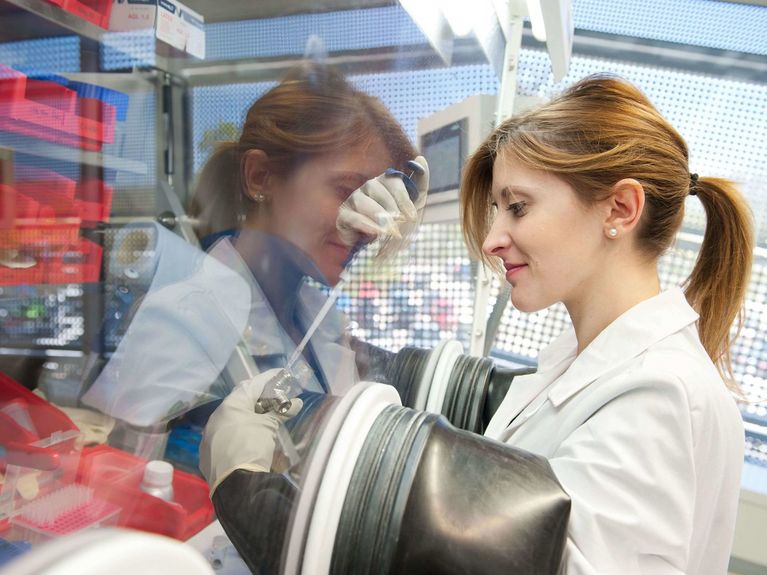
Story #04
Exploring Tomorrow’s Topics with Universities: The Helmholtz Institutes
In order to address key topics for tomorrow and capitalize on synergies with universities, we create joint research institutes: our Helmholtz Institutes. They can rapidly become essential institutions in their respective fields – with international appeal.
Our research centers collaborate closely with universities. And when it comes to highly specific questions for tomorrow, the partners further intensify that collaboration: at our Helmholtz Institutes, we jointly focus on competitive, outstanding research, e.g. in the areas of health, energy, biodiversity, climate protection, and innovative technologies.
At these Institutes, we not only train the next generation of scientists; we also spur on knowledge transfer in pioneering research fields: together, we develop products and solutions that benefit the economy and society alike. For example, the Helmholtz Institutes pursue research into innovative materials for batteries or new active ingredients to combat infectious diseases, work to improve recycling methods for valuable metals, and offer consulting on climate change impacts.
There are currently 15 Helmholtz Institutes, most of which are based on collaborations between a university and a Helmholtz Center. However, some Institutes combine the expertise of multiple partners: at the Helmholtz Institute Jena, the Helmholtz Centers DESY, GSI and HZDR are working with Friedrich Schiller University to create cutting-edge light sources for research. In turn, the Helmholtz Institute Ulm is developing future-ready batteries, e.g. for electric vehicles. To do so, it pools the resources of Karlsruhe Institute of Technology (KIT), the German Aerospace Center (DLR), Ulm University, and the Centre for Solar Energy and Hydrogen Research Baden-Württemberg (ZSW). Lastly, the Helmholtz Institute for RNA-based Infection Research (HIRI) in Würzburg focuses its research efforts on ribonucleic acid (RNA) and analyzing its role in infectious diseases, so as to develop new tests, therapies and active ingredients. To this end, the Helmholtz Centre for Infection Research (HZI) and University of Würzburg (JMU) work closely together.
Helmholtz Institutes are always headquartered on the campus of the participating university, building on the expertise of both / all partners. Formally, each one constitutes a satellite of the respective Helmholtz Center(s). The Institutes collaborate intensively with local and international research organizations, often becoming “lighthouse” institutions in their field. When leading minds, next-gen resources, and a vibrant network for exchanging ideas come together, the result is hubs with tremendous potential for innovation – and which attract talent from around the globe.
Picture: Helmholtz-Institut Ulm
Participating centers
- AWI
Alfred Wegener Institute, Helmholtz Centre for Polar and Marine Research
- DESY
Deutsche Elektronen-Synchrotron DESY
- Jülich
Forschungszentrum Jülich
- GSI
GSI Helmholtzzentrum für Schwerionenforschung
- DLR
German Aerospace Center
- DKFZ
German Cancer Research Center
- HZI
Helmholtz Centre for Infection Research
- Munich
Helmholtz Munich
- HZB
Helmholtz-Zentrum Berlin für Materialien und Energie
- HZDR
Helmholtz-Zentrum Dresden-Rossendorf
- Hereon
Helmholtz-Zentrum Hereon
- KIT
Karlsruhe Institute of Technology
- MDC
Max Delbrück Center